Matthew B. Blaschko
Large Language Models Reasoning Abilities Under Non-Ideal Conditions After RL-Fine-Tuning
Aug 06, 2025Abstract:Reinforcement learning (RL) has become a key technique for enhancing the reasoning abilities of large language models (LLMs), with policy-gradient algorithms dominating the post-training stage because of their efficiency and effectiveness. However, most existing benchmarks evaluate large-language-model reasoning under idealized settings, overlooking performance in realistic, non-ideal scenarios. We identify three representative non-ideal scenarios with practical relevance: summary inference, fine-grained noise suppression, and contextual filtering. We introduce a new research direction guided by brain-science findings that human reasoning remains reliable under imperfect inputs. We formally define and evaluate these challenging scenarios. We fine-tune three LLMs and a state-of-the-art large vision-language model (LVLM) using RL with a representative policy-gradient algorithm and then test their performance on eight public datasets. Our results reveal that while RL fine-tuning improves baseline reasoning under idealized settings, performance declines significantly across all three non-ideal scenarios, exposing critical limitations in advanced reasoning capabilities. Although we propose a scenario-specific remediation method, our results suggest current methods leave these reasoning deficits largely unresolved. This work highlights that the reasoning abilities of large models are often overstated and underscores the importance of evaluating models under non-ideal scenarios. The code and data will be released at XXXX.
Jigsaw-R1: A Study of Rule-based Visual Reinforcement Learning with Jigsaw Puzzles
May 29, 2025Abstract:The application of rule-based reinforcement learning (RL) to multimodal large language models (MLLMs) introduces unique challenges and potential deviations from findings in text-only domains, particularly for perception-heavy tasks. This paper provides a comprehensive study of rule-based visual RL using jigsaw puzzles as a structured experimental framework, revealing several key findings. \textit{Firstly,} we find that MLLMs, initially performing near to random guessing on simple puzzles, achieve near-perfect accuracy and generalize to complex, unseen configurations through fine-tuning. \textit{Secondly,} training on jigsaw puzzles can induce generalization to other visual tasks, with effectiveness tied to specific task configurations. \textit{Thirdly,} MLLMs can learn and generalize with or without explicit reasoning, though open-source models often favor direct answering. Consequently, even when trained for step-by-step reasoning, they can ignore the thinking process in deriving the final answer. \textit{Fourthly,} we observe that complex reasoning patterns appear to be pre-existing rather than emergent, with their frequency increasing alongside training and task difficulty. \textit{Finally,} our results demonstrate that RL exhibits more effective generalization than Supervised Fine-Tuning (SFT), and an initial SFT cold start phase can hinder subsequent RL optimization. Although these observations are based on jigsaw puzzles and may vary across other visual tasks, this research contributes a valuable piece of jigsaw to the larger puzzle of collective understanding rule-based visual RL and its potential in multimodal learning. The code is available at: \href{https://github.com/zifuwanggg/Jigsaw-R1}{https://github.com/zifuwanggg/Jigsaw-R1}.
Revisiting Reweighted Risk for Calibration: AURC, Focal Loss, and Inverse Focal Loss
May 29, 2025Abstract:Several variants of reweighted risk functionals, such as focal losss, inverse focal loss, and the Area Under the Risk-Coverage Curve (AURC), have been proposed in the literature and claims have been made in relation to their calibration properties. However, focal loss and inverse focal loss propose vastly different weighting schemes. In this paper, we revisit a broad class of weighted risk functions commonly used in deep learning and establish a principled connection between these reweighting schemes and calibration errors. We show that minimizing calibration error is closely linked to the selective classification paradigm and demonstrate that optimizing a regularized variant of the AURC naturally leads to improved calibration. This regularized AURC shares a similar reweighting strategy with inverse focal loss, lending support to the idea that focal loss is less principled when calibration is a desired outcome. Direct AURC optimization offers greater flexibility through the choice of confidence score functions (CSFs). To enable gradient-based optimization, we introduce a differentiable formulation of the regularized AURC using the SoftRank technique. Empirical evaluations demonstrate that our AURC-based loss achieves competitive class-wise calibration performance across a range of datasets and model architectures.
Beyond Segmentation: Confidence-Aware and Debiased Estimation of Ratio-based Biomarkers
May 26, 2025Abstract:Ratio-based biomarkers -- such as the proportion of necrotic tissue within a tumor -- are widely used in clinical practice to support diagnosis, prognosis and treatment planning. These biomarkers are typically estimated from soft segmentation outputs by computing region-wise ratios. Despite the high-stakes nature of clinical decision making, existing methods provide only point estimates, offering no measure of uncertainty. In this work, we propose a unified \textit{confidence-aware} framework for estimating ratio-based biomarkers. We conduct a systematic analysis of error propagation in the segmentation-to-biomarker pipeline and identify model miscalibration as the dominant source of uncertainty. To mitigate this, we incorporate a lightweight, post-hoc calibration module that can be applied using internal hospital data without retraining. We leverage a tunable parameter $Q$ to control the confidence level of the derived bounds, allowing adaptation towards clinical practice. Extensive experiments show that our method produces statistically sound confidence intervals, with tunable confidence levels, enabling more trustworthy application of predictive biomarkers in clinical workflows.
Unlocking the Value of Decentralized Data: A Federated Dual Learning Approach for Model Aggregation
Mar 26, 2025Abstract:Artificial Intelligence (AI) technologies have revolutionized numerous fields, yet their applications often rely on costly and time-consuming data collection processes. Federated Learning (FL) offers a promising alternative by enabling AI models to be trained on decentralized data where data is scattered across clients (distributed nodes). However, existing FL approaches struggle to match the performance of centralized training due to challenges such as heterogeneous data distribution and communication delays, limiting their potential for breakthroughs. We observe that many real-world use cases involve hybrid data regimes, in which a server (center node) has access to some data while a large amount of data is distributed across associated clients. To improve the utilization of decentralized data under this regime, address data heterogeneity issue, and facilitate asynchronous communication between the server and clients, we propose a dual learning approach that leverages centralized data at the server to guide the merging of model updates from clients. Our method accommodates scenarios where server data is out-of-domain relative to decentralized client data, making it applicable to a wide range of use cases. We provide theoretical analysis demonstrating the faster convergence of our method compared to existing methods. Furthermore, experimental results across various scenarios show that our approach significantly outperforms existing technologies, highlighting its potential to unlock the value of large amounts of decentralized data.
DAVE: Diagnostic benchmark for Audio Visual Evaluation
Mar 12, 2025Abstract:Audio-visual understanding is a rapidly evolving field that seeks to integrate and interpret information from both auditory and visual modalities. Despite recent advances in multi-modal learning, existing benchmarks often suffer from strong visual bias -- where answers can be inferred from visual data alone -- and provide only aggregate scores that conflate multiple sources of error. This makes it difficult to determine whether models struggle with visual understanding, audio interpretation, or audio-visual alignment. In this work, we introduce DAVE (Diagnostic Audio Visual Evaluation), a novel benchmark dataset designed to systematically evaluate audio-visual models across controlled challenges. DAVE alleviates existing limitations by (i) ensuring both modalities are necessary to answer correctly and (ii) decoupling evaluation into atomic subcategories. Our detailed analysis of state-of-the-art models reveals specific failure modes and provides targeted insights for improvement. By offering this standardized diagnostic framework, we aim to facilitate more robust development of audio-visual models. The dataset is released: https://github.com/gorjanradevski/dave
ChromaFormer: A Scalable and Accurate Transformer Architecture for Land Cover Classification
Mar 11, 2025Abstract:Remote sensing imagery from systems such as Sentinel provides full coverage of the Earth's surface at around 10-meter resolution. The remote sensing community has transitioned to extensive use of deep learning models due to their high performance on benchmarks such as the UCMerced and ISPRS Vaihingen datasets. Convolutional models such as UNet and ResNet variations are commonly employed for remote sensing but typically only accept three channels, as they were developed for RGB imagery, while satellite systems provide more than ten. Recently, several transformer architectures have been proposed for remote sensing, but they have not been extensively benchmarked and are typically used on small datasets such as Salinas Valley. Meanwhile, it is becoming feasible to obtain dense spatial land-use labels for entire first-level administrative divisions of some countries. Scaling law observations suggest that substantially larger multi-spectral transformer models could provide a significant leap in remote sensing performance in these settings. In this work, we propose ChromaFormer, a family of multi-spectral transformer models, which we evaluate across orders of magnitude differences in model parameters to assess their performance and scaling effectiveness on a densely labeled imagery dataset of Flanders, Belgium, covering more than 13,500 km^2 and containing 15 classes. We propose a novel multi-spectral attention strategy and demonstrate its effectiveness through ablations. Furthermore, we show that models many orders of magnitude larger than conventional architectures, such as UNet, lead to substantial accuracy improvements: a UNet++ model with 23M parameters achieves less than 65% accuracy, while a multi-spectral transformer with 655M parameters achieves over 95% accuracy on the Biological Valuation Map of Flanders.
Touchstone Benchmark: Are We on the Right Way for Evaluating AI Algorithms for Medical Segmentation?
Nov 06, 2024



Abstract:How can we test AI performance? This question seems trivial, but it isn't. Standard benchmarks often have problems such as in-distribution and small-size test sets, oversimplified metrics, unfair comparisons, and short-term outcome pressure. As a consequence, good performance on standard benchmarks does not guarantee success in real-world scenarios. To address these problems, we present Touchstone, a large-scale collaborative segmentation benchmark of 9 types of abdominal organs. This benchmark is based on 5,195 training CT scans from 76 hospitals around the world and 5,903 testing CT scans from 11 additional hospitals. This diverse test set enhances the statistical significance of benchmark results and rigorously evaluates AI algorithms across various out-of-distribution scenarios. We invited 14 inventors of 19 AI algorithms to train their algorithms, while our team, as a third party, independently evaluated these algorithms on three test sets. In addition, we also evaluated pre-existing AI frameworks--which, differing from algorithms, are more flexible and can support different algorithms--including MONAI from NVIDIA, nnU-Net from DKFZ, and numerous other open-source frameworks. We are committed to expanding this benchmark to encourage more innovation of AI algorithms for the medical domain.
A Novel Characterization of the Population Area Under the Risk Coverage Curve (AURC) and Rates of Finite Sample Estimators
Oct 20, 2024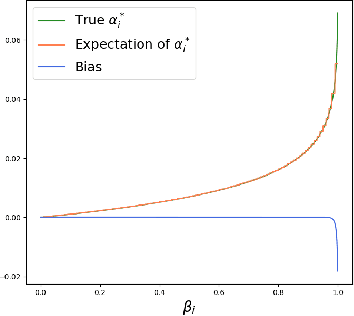

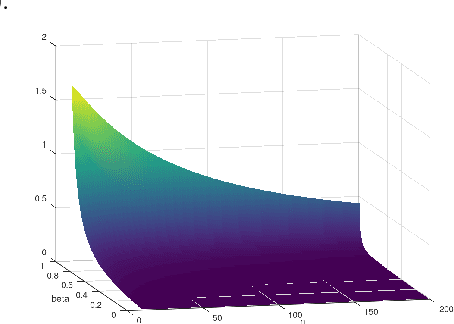
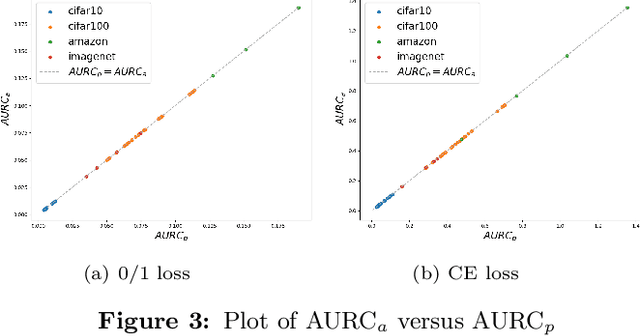
Abstract:The selective classifier (SC) has garnered increasing interest in areas such as medical diagnostics, autonomous driving, and the justice system. The Area Under the Risk-Coverage Curve (AURC) has emerged as the foremost evaluation metric for assessing the performance of SC systems. In this work, we introduce a more straightforward representation of the population AURC, interpretable as a weighted risk function, and propose a Monte Carlo plug-in estimator applicable to finite sample scenarios. We demonstrate that our estimator is consistent and offers a low-bias estimation of the actual weights, with a tightly bounded mean squared error (MSE). We empirically show the effectiveness of this estimator on a comprehensive benchmark across multiple datasets, model architectures, and Confidence Score Functions (CSFs).
AC-IND: Sparse CT reconstruction based on attenuation coefficient estimation and implicit neural distribution
Sep 11, 2024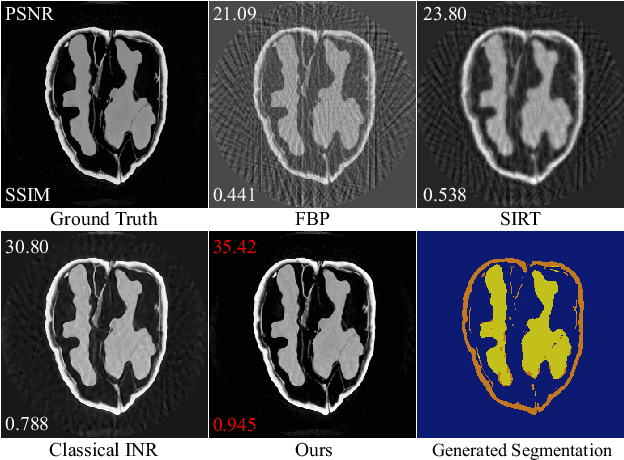
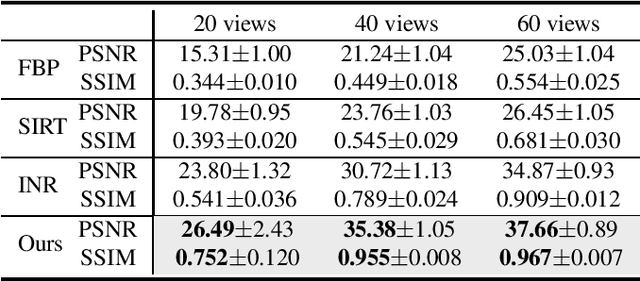
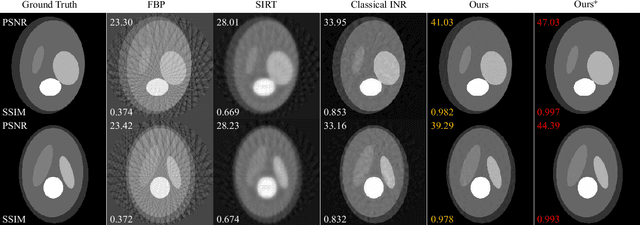
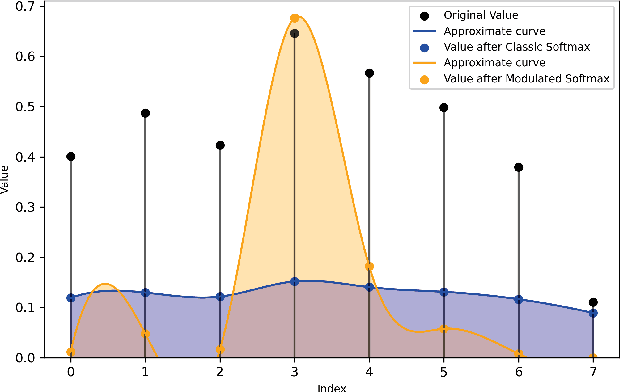
Abstract:Computed tomography (CT) reconstruction plays a crucial role in industrial nondestructive testing and medical diagnosis. Sparse view CT reconstruction aims to reconstruct high-quality CT images while only using a small number of projections, which helps to improve the detection speed of industrial assembly lines and is also meaningful for reducing radiation in medical scenarios. Sparse CT reconstruction methods based on implicit neural representations (INRs) have recently shown promising performance, but still produce artifacts because of the difficulty of obtaining useful prior information. In this work, we incorporate a powerful prior: the total number of material categories of objects. To utilize the prior, we design AC-IND, a self-supervised method based on Attenuation Coefficient Estimation and Implicit Neural Distribution. Specifically, our method first transforms the traditional INR from scalar mapping to probability distribution mapping. Then we design a compact attenuation coefficient estimator initialized with values from a rough reconstruction and fast segmentation. Finally, our algorithm finishes the CT reconstruction by jointly optimizing the estimator and the generated distribution. Through experiments, we find that our method not only outperforms the comparative methods in sparse CT reconstruction but also can automatically generate semantic segmentation maps.
 Add to Chrome
Add to Chrome Add to Firefox
Add to Firefox Add to Edge
Add to Edge